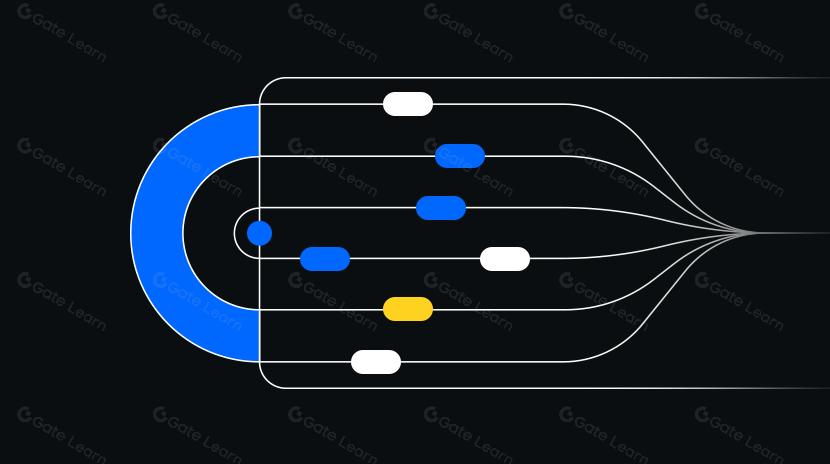decending triangle pattern

The descending triangle pattern is a bearish chart formation commonly observed in technical analysis, typically appearing during price trend transitions and considered by traders as a potential bearish signal. This pattern is formed by a horizontal support line and a downward-sloping resistance line, with price oscillations gradually narrowing until they converge at the triangle's apex. In cryptocurrency markets, descending triangles are particularly noteworthy as they often predict a significant downward price movement following a breakdown below the support level.
What are the key features of descending triangle pattern?
The descending triangle pattern possesses several key characteristics that make it a powerful tool for traders to identify potential selling opportunities:
-
Pattern Structure: Composed of a relatively horizontal support line and a downward-sloping resistance line, reflecting buyers maintaining support at a fixed price area while sellers apply pressure at progressively lower price levels.
-
Volume Behavior: A typical descending triangle is accompanied by gradually diminishing volume, indicating reduced market participation during the pattern's development, preparing for the eventual breakout.
-
Formation Period: In cryptocurrency markets, this pattern may form over a period ranging from days to weeks, often with shorter cycles compared to traditional financial markets.
-
Breakout Confirmation: Valid breakouts usually require a notable increase in volume, with price moving below the support line by at least the height of the triangle (the vertical distance from the highest point at pattern inception to the support line).
-
Reliability Factors: Larger patterns (spanning longer timeframes) tend to produce more reliable post-breakout movements; confirmation across multiple timeframes can enhance prediction accuracy.
Identifying descending triangles in crypto markets should be complemented with other technical indicators such as Relative Strength Index (RSI), Moving Average Convergence/Divergence (MACD), etc., to improve predictive accuracy.
What is the market impact of descending triangle pattern?
Descending triangle patterns have significant impacts on cryptocurrency markets, manifested in several ways:
-
Market Sentiment Indicator: When major cryptocurrencies like Bitcoin form descending triangles, the entire market often becomes cautious or bearish, especially when the pattern appears on larger timeframe charts such as daily or weekly.
-
Liquidity Concentration: The convergence zone of triangles typically attracts substantial trading activity, leading to concentrated liquidity before breakouts, providing opportunities for large traders to build or liquidate positions.
-
Ripple Effects: Descending triangle breakouts in mainstream cryptocurrencies often trigger domino effects across the market, influencing the trajectory of smaller-cap tokens and altcoins.
-
Increased Speculative Activity: As patterns approach breakout points, activity in leveraged trading and futures markets typically increases, resulting in amplified volatility.
-
Technical Analysis Self-Fulfilling Prophecy: Since many traders simultaneously observe and make trading decisions based on the same pattern, the predicted outcome often materializes through collective behavior.
What are the risks and challenges of descending triangle pattern?
While widely applied in cryptocurrency trading, traders should be aware of the following risks and challenges when using descending triangles for decision-making:
-
False Breakout Risk: The highly volatile cryptocurrency market is prone to short-term false breakouts, with prices subsequently returning within the triangle. These "bear traps" can trigger stop losses before prices reverse upward.
-
Breakout Direction Uncertainty: Although descending triangles are generally considered bearish patterns, in approximately 15-25% of cases, prices may break upward, forming a reversal signal.
-
Post-Breakout Retests: After breaking below the support line, prices frequently retest the original support (now resistance), creating challenges for traders implementing their strategies.
-
Over-reliance on Single Indicators: Trading solely based on chart patterns while ignoring fundamental factors and market sentiment can lead to significant losses, especially in news-driven markets like cryptocurrencies.
-
Timeframe Discrepancies: Contradictory patterns may simultaneously appear on different timeframe charts, increasing the difficulty of interpretation.
-
Market Manipulation Risk: Large players ("whales") in cryptocurrency markets may deliberately exploit traders' reliance on technical patterns by manipulating short-term prices to influence market behavior.
While descending triangles have predictive value, best practice is to incorporate them as part of a comprehensive trading strategy rather than as the sole decision-making basis.
The descending triangle pattern serves as an important tool in technical analysis, providing cryptocurrency market participants with a framework to identify potential trend changes. Understanding and correctly interpreting this pattern helps traders make more informed decisions when prices approach critical support levels. However, no technical pattern offers absolute predictive accuracy, and should be used in conjunction with market fundamentals, macroeconomic factors, and other technical indicators to form a comprehensive market perspective. In highly volatile cryptocurrency markets, risk management and appropriate position sizing remain more important than purely pursuing predictive accuracy.
Related Articles

Exploring 8 Major DEX Aggregators: Engines Driving Efficiency and Liquidity in the Crypto Market

What Is Copy Trading And How To Use It?
